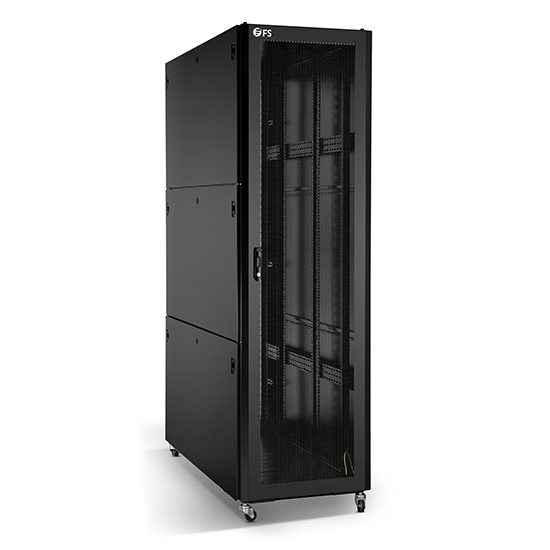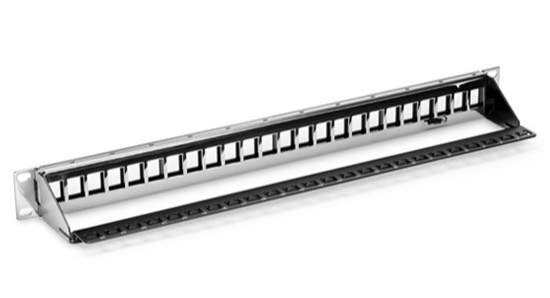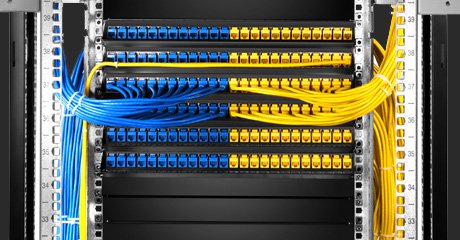Server rack is such a useful kit to deploy in the large data centers. Commonly, there are two basic methods to build a structured cabling system. One is to have a patch panel in the rack, and the other one is to use the switch. Both the two methods are beneficial to managing fiber cables. Today, we will talk about the first one, server rack patch panel.
Why Use Patch Panel on Server Rack
The reason is simple: installing patch panel on server rack can make a proper cable management. This is crucial to build a better network system and ensure a well running status as it provides the technological backbone. First, without a patch panel, all cables may be in jumble and increase the risk of cable congestion. It may lead to connection fault and even the losses to the enterprises. Second, disordered cables can cause clogged airflow, which is harmful to hardware safety. We know, all electric devices will generate heat when they run. So it needs more space for air flow to cool. Server rack patch panel is such a good way by managing different port densities and speeds in one high density patch panel, then the valuable rack space is saved. The approach can actually promote the air flow and protect the hardware.
Considerations When Organizing Server Rack Patch Panel
Here are a few facts to consider when you organize sever rack patch panel.
Equipment location. According to the convenience and available space, choose the rack location. Find the cold spots in the room, then place the rack front facing the cold area that can offer the maximum cooling for the hardware. In addition, make sure that there is enough space around to conduct any service.
Manage copper and fiber cables separately. Try to run copper cables on one side and fiber cables on the other side. Thus copper and fiber cables will not mix. Besides, if the cables lay closely, it may cause interference or crosstalk. Managing the cables separately can help to make an easier access to the equipment when it needs to be upgraded or changed.
Best Selections of Server Rack Patch Panel
Server rack patch panel is one kind of horizontal cable management. Traditionally, a majority of data center equipment uses 19 inch wide design. Now I will introduce some equipment from FS.COM for your reference.
45U black server cabinet can accommodate all 19 inch EIA standard networking equipment, like FHD fiber enclosures, MTP cassette, and FHU patch panels. This server rack includes a welded and assembled steel frame construction with a static loading capacity of 3527lbs. The design of perforated doors allows maximum airflow to be drawn through the server cabinet, which is good for maintaining the devices installed on the cabinet.
The unshielded 24 port blank keystone patch panel is an ideal tool to manage both copper and fiber cables, so you can customize your patch panel and create a perfect mix connection based on your specific applications. This patch panel adopts the design of removable rear cable manager, which is conducive to uninstall and install. And it can be labeled for easy connection identification.
All these are good practice of server rack patch panel. When you need to set up a data center, welcome to FS.COM to select the best products for your network system.


